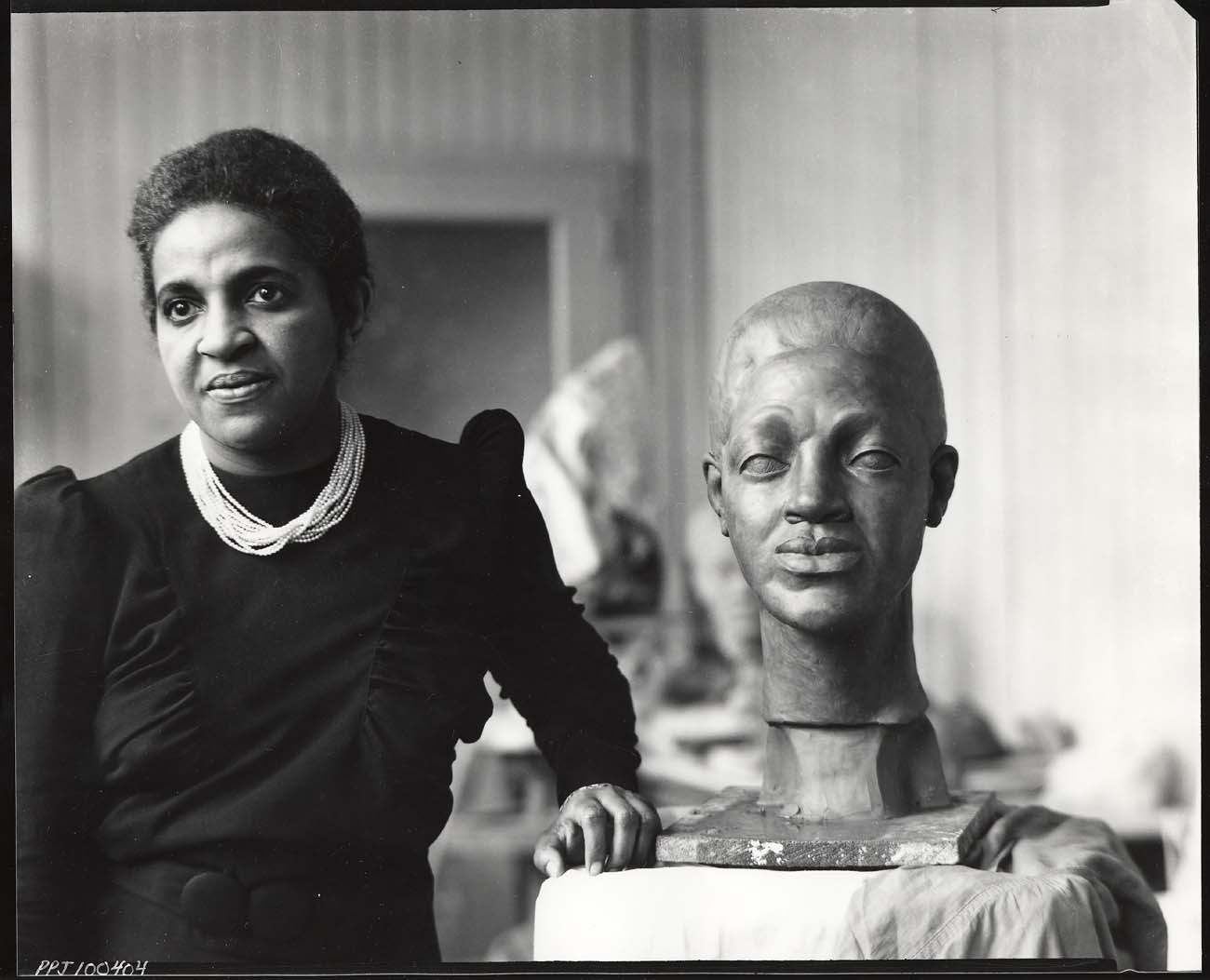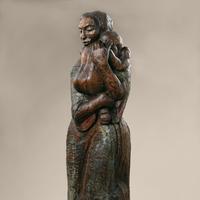More about Selma Burke
Works by Selma Burke

Contributor
Selma Burke was an incredible sculptor that all of us unknowingly recognize due to her most famous work; the sculpted profile of President FDR on the dime.
There’s a lot of drama with that sculpture of Franklin Delano Roosevelt, which I will get into later.
First, Burke was one of 10 children, born in North Carolina. She began experimenting with clay as a child while doing laundry, which included white clay in the cleaning process. Her artistic interest can also be credited to her late grandmother, who was an artist herself and to her father, who traveled extensively to the Caribbean, Africa, South America, and Europe bringing back treasures to his family. Being a practical lady, Burke went to nursing school and while working as a nurse she further developed her artistic endeavors.
It wasn’t until she pursued additional nursing education at the Women’s Medical College in Philadelphia that her first opportunity to work as an artist was realized. Recommended to be the private nurse of the dowager heiress of the Otis Elevator Company in Cooperstown, New York, the ailing heiress encouraged young Burke’s artistic pursuits.
After the heiress’s death in 1935, Burke moved to New York City where she began to pursue art professionally. She not only won a scholarship to Columbia University's MFA program, she also traveled all throughout Europe to immerse herself in some of the world’s greatest sculptural masterpieces. The rest they can say, is history.
Now back to that dime drama. After injuring her back, Burke heard of and entered a national competition to create a profile portrait of U.S. President Franklin Delano Roosevelt sponsored by the Fine Arts Commission in Washington, D.C. She won the competition, beating out 11 other competitors. However, her rendition of the President evoked some harsh criticism from one person in particular, the First Lady, who said Burke made the president look too young. Burke retorted saying, “I didn’t make it for today, I made it for tomorrow and tomorrow.” Unfortunately, FDR died five months later and before the official unveiling of the sculpture. And because of his untimely death, the U.S. Mint and Congress proposed engraving his portrait on the dime and sought U.S. Mint engraver John Sinnock to complete the job. However, after its unveiling, the similarities to Burke’s own engraving of the late-president had many, including Roosevelt’s son, believing that the engraving used in the dime was Burke’s work, not Sinnock's.
To this day, there are still those debating who should be credited with the engraving on the dime, with the Smithsonian on Burke’s side of the coin. Despite her dime snub, Selma Burke continued to create magnificent sculptures and created not one but two art centers, the Selma Burke Art Center in Pittsburgh and the Selma Burke School of Sculpture in New York, to bring the arts to those she believed were in need. Burke was also the recipient of eight honorary degrees, was featured in over 25 group and solo exhibitions during her lifetime, and lived by the motto, “I really live and move in the atmosphere I am creating.”
Sources
- "Burke, Selma 1900–1995." Contemporary Black Biography. Encyclopedia.com. (November 22, 2018). https://www.encyclopedia.com/education/news-wires-white-papers-and-book…
- “Selma Burke.” Smithsonian American Art Museum. Accessed November, 2018. https://americanart.si.edu/artist/selma-burke-27983
- Djossa, Christina Ayele. “Who Really Designed the American Dime?” Atlas Obscura. January 17, 2018. Accessed November 2018. https://www.atlasobscura.com/articles/who-designed-american-dime-selma-…
- Kenney, Tanasia. “Did You Know This Black Woman’s Sculpture of Pres. Roosevelt Is on Every Dime?” Atlanta Black Star. /march 2, 2018. Accessed November, 2018. https://atlantablackstar.com/2017/03/02/did-know-black-womans-sculpture…
- “Selma Burke, Renowned for FDR Portrait, on the Dime,” NC Department of Natural and Cultural Resources Blog, https://www.ncdcr.gov/blog/2015/12/31/selma-burke-renowned-fdr-portrait…
- “Selma Burke.” Woodmere Art Museum. Accessed November 2018.https://woodmereartmuseum.org/experience/exhibitions/john-mosley-photog…
Featured Content
Here is what Wikipedia says about Selma Burke
Selma Hortense Burke (December 31, 1900 – August 29, 1995) was an American sculptor and a member of the Harlem Renaissance movement. Burke is best known for a bas relief portrait of President Franklin D. Roosevelt which may have been the model for his image on the obverse of the dime. She described herself as "a people's sculptor" and created many pieces of public art, often portraits of prominent African-American figures like Duke Ellington, Mary McLeod Bethune and Booker T. Washington. In 1979, she was awarded the Women's Caucus for Art Lifetime Achievement Award. She summed up her life as an artist, "I really live and move in the atmosphere in which I am creating".
Check out the full Wikipedia article about Selma Burke











